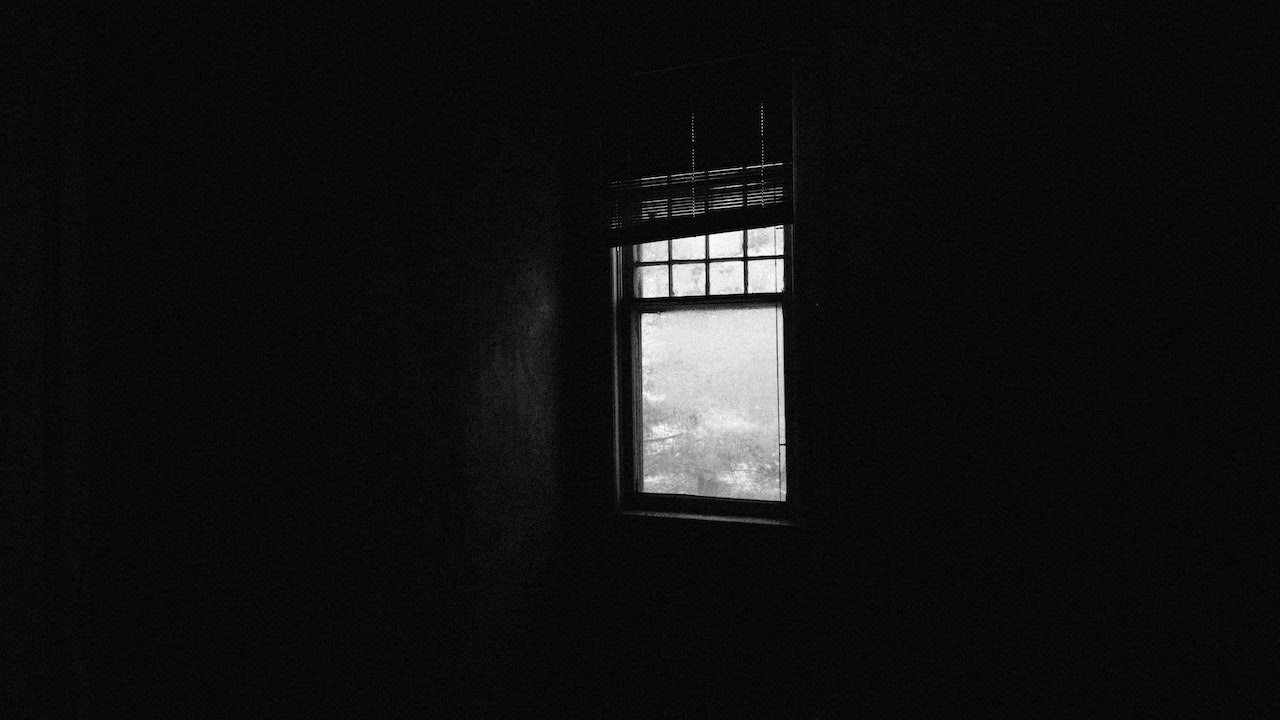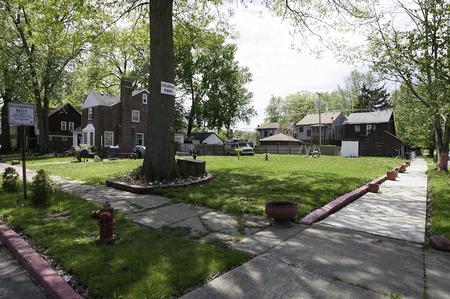Broken Windows Theory’s “Tipping Point” Concept Challenged in New Study
“Ignored but not Forgotten: The Broken Windows Tipping Point and the Question of Functional Form” explores the relationship between disorder and crime in Detroit by using public data from the city’s neighborhoods.

Since it was published, the broken windows theory has been a major influence on policing practices, drawing a connection between policing and neighborhood safety.
“Disorder and crime are usually inextricably linked, in a kind of developmental sequence,” authors James Q. Wilson and George L. Kelling write in the first paragraph of their 1982 article published in The Atlantic Monthly. “Social psychologists and police officers tend to agree that if a window in a building is broken and is left unrepaired, all the rest of the windows will soon be broken. This is as true in nice neighborhoods as in rundown ones … One unrepaired broken window is a signal that no one cares.”
Wilson and Kelling’s central thesis contends that a resident’s perception of disorder can result in fear, leading them to disengage with the community. That behavior then leads to an environment where criminal activity would become more common.
“Broken windows theory is a highly contentious theory and evaluations that test out the pathways laid out in the theory have produced a lot of mixed findings, as well as evaluations of broken windows policing practices.” — Alaina De Biasi, author of “Ignored but not Forgotten: The Broken Windows Tipping Point and the Question of Functional Form”
While many studies have explored the practical application of the theory, new research in the British Journal of Criminology, “Ignored but not Forgotten: The Broken Windows Tipping Point and the Question of Functional Form,” explores that “tipping point” in Detroit.
“Broken windows theory is a highly contentious theory,” says Alaina De Biasi, who wrote the study. “Evaluations that test out the pathways laid out in the theory have produced a lot of mixed findings, as well as evaluations of broken windows policing practices.”
Criticism Of Broken Windows Theory
The broken windows theory has been debated and criticized for its role in racial discrimination in policing. Others argue for increased analysis of the link between disorder and crime.
“I think sometimes people confuse broken windows policing with other types of policing like ‘stop and frisk’ and zero-tolerance policing,” said De Biasi, a postdoctoral fellow at the Firearm Violence Research Center at the University of California-Davis. “These practices shouldn’t be conflated. They’ve been known to be procedurally unjust and damaged police-community relations.”
“To the contrary, broken windows policing really does require a collaborative relationship between the police and the community in which neighborhood problems are identified,” she adds.
The Tipping Point
As part of their original publication, Wilson and Kelling make a call to identify “neighborhoods at the tipping point.”
“Some neighborhoods are so demoralized and crime-ridden as to make foot patrol useless; the best the police can do with limited resources is respond to the enormous number of calls for service,” they write. “Where the public order is deteriorating but not unreclaimable, where the streets are used frequently but by apprehensive people, where a window is likely to be broken at any time, and must quickly be fixed if all are not to be shattered.”
De Biasi’s research examines the relationship between “physical disorder and violent crime rate in an effort to shed light on the broken windows tipping point” by using public data from Detroit’s neighborhoods. Her analysis focuses on various census blocks surveyed by groups like Data Driven Detroit and Loveland Technologies, which published details of neighborhood conditions, like the percentage of homes suggested for demolition and the percentage of unmaintained lots.
“What I found was something more like a watered-down version of a tipping point. Past a certain level of disorder, we’re not seeing a huge spike in violent crime,” says De Biasi. “We’re seeing an increase, but it’s not as dramatic as what Wilson and Kelling made it out to be.”
De Biasi believes her research counters notions that police should direct most of their resources to hard-hit neighborhoods. “This is a really good thing for neighborhoods because there’s not as big of a threat of them being catapulted into this very crime-ridden state and there are more opportunities for interventions to occur.”
Listen: Alaina De Biasi discusses the findings of the new study and the implications for communities and policing.
WDET’s Eli Newman spoke with Alaina De Biasi about her study. Read an excerpt of their conversation, edited for brevity and clarity, below.
Newman: As part of your research, you focus on the tipping point and basically the idea that at a certain point of neighborhood disorder which is to say, tall grass, trash on the streets, whatever it might be, there’s a point where violent crime is expected to surge. So what did you find out in your research? Do those kinds of tipping points exist?
De Biasi: I found something that resembled a tipping point, but not quite. The increase in violent crime was not as nearly as severe as the description of the relationship. So this still has a lot of implications for communities, policing, as well as theory testing.
What are some of those implications?
Without the looming threat of the tipping point, there are likely more opportunities for residents, for example, to strengthen and exercise and informal social control without needing the assistance of the police. And on the flip side, there are also more opportunities for the police to assist residents if needed or wanted, for that matter.

What would something like that actually mean in terms of increased community investment? You’re talking about things like urban gardens, neighborhood cleanup programs, things like that?
There are a lot of really cool initiatives happening in Detroit right now. There’s the side-lot program where residents can purchase a side lot for between $100 to $200. There’s a nonprofit organization called the Greening of Detroit, which has the mission to increase the quality of life for Detroiters by planting trees, providing job training, education programs. There’s a lot of really cool things happening in Detroit right now that could help these neighborhoods turn around.
And not just turn them around in an economic sense, but turn them around in terms of turning crime down?
Right. But to that point, my findings also suggest that the allocation of police resources to crime hot spots may be preferable.
Can you elaborate on what you mean by a “hot spot?” Are those places where there’s a lot of concentrated crime?
Right. So essentially, if there’s not the looming threat of the tipping point, if that’s kind of nothing over communities, it might behoove police to focus on how they can reduce the most amount of crime with the least amount of police resources and hot spots policing has been shown to be really effective in that regard.
Knowing that many of these places are still salvageable, what kind of advice would you have for somebody who’s crafting city policy and policing strategies?
There’s a lot of great programs in Detroit that focus on greening vacant lots, rehabbing vacant homes, the tearing down buildings that are not salvageable in any way. I think these efforts are really great and have been shown to be effective and revitalizing neighborhoods and also reducing crime and fear of crime. I think that work should continue to be supported.
As far as policing practices go, I think it’s very important for the community to be a staple of policing and to be highly valued. Moving forward, I think there needs to be a strong focus on community and their role in identifying problems in their neighborhood and a collaborative partnership with the police and community.
Trusted, accurate, up-to-date.
WDET strives to make our journalism accessible to everyone. As a public media institution, we maintain our journalistic integrity through independent support from readers like you. If you value WDET as your source of news, music and conversation, please make a gift today.

